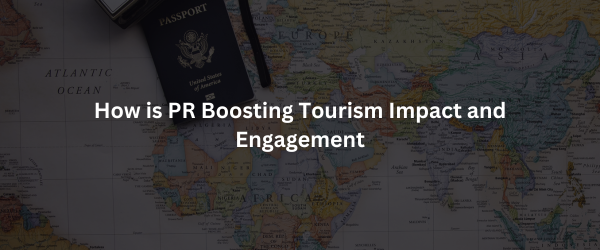
Purpose and Brand Success
February 17, 2021
Trends in communications post COVID 19
February 23, 2021When we talk about PR, the primary thing that hits our head is aren’t they the ones that can do anything associated with media under one roof? Not quite. There are several types of PR practices. PR is quite a broad field and an individual can work with companies or individuals; government or the non-profit world and can handle multiple roles.
Here are some types of PR Practices:
1. Media Relations
Among the various types of PR practices, this is perhaps the most common. Media relations is all about handling the media – writing press releases, scheduling interviews and giving press conferences. The goal is to get positive coverage of your company or your product. Key to media relations is generating a ‘hook’ to attract audiences. Compelling storytelling with a combination of conviction goes a protracted way. Media relations people have to be excellent forward planners and also very flexible.
2. Corporate and Social Responsibility
This PR requires to take care of company’s reputation for ethics, environmental responsibility, and community and charity works. It can hugely affect an organisation’s business practices.To be an honest CSR professional should have good networking skills, people skills, persuasion and therefore the ability to endear yourself to your colleagues.
3. Public Affairs
Public affairs, also called lobbying, is all about getting the govt. on your side. Public affairs relates to matters that affect the general public directly, like legislation or public administration. Due to this, public affairs roles typically align with non-corporate entities, like government agencies or non-profits. These professionals are expected to be tenacious.
4. Crisis Management
Crisis management is needed when a crisis strikes because of various reasons associated with the brand or company. These incidents can ruin the company’s reputation and wish to be addressed quickly. Crisis managers are quick thinkers who know the way to spin a problem. They understand every media channel in order that they can tell which problems needs a press conference and which may be solved with one tweet.
5. Social Media
Many companies Digital PR because it has huge potential. It is an area where interactions with one customer are visible to the entire world. It allows companies to open a two way communications with their stakeholders.
6. Employee Relations
Also referred to as internal PR, employee relations is essential for a business to give employees a positive view of the brand they work for. The goal is to keep them satisfied, and motivated. Employee relations work includes organising employee events, creating internal newsletters and other communications, resolving disputes and other such activities.
Related: Why is Internal Communications Important
PR is one such profession where an individual is expected to be a jack of all trades, and master most of them too. PR can never be a one-off task, it’s a smartly formulated ongoing and iterative strategy to measure successful results.
This blog post originally appeared on Nidhi Verma’s blog: thinkwithnidhi.wordpress.com
Nidhi Verma
 i has worked as a Brand Executive for national and regional brands. She has also completed a Post Graduate Diploma in Advertising & PR from MICA, Ahmedabad. Her goal is to be an indispensable member of a team facilitating PR function for passionate & audience-conscious brands at a global corporation, which has a societal ethos in place to drive sustainable change. She can be reached at @thinkwithnidhi on Twitter, and as Nidhi Verma on LinkedIn.
i has worked as a Brand Executive for national and regional brands. She has also completed a Post Graduate Diploma in Advertising & PR from MICA, Ahmedabad. Her goal is to be an indispensable member of a team facilitating PR function for passionate & audience-conscious brands at a global corporation, which has a societal ethos in place to drive sustainable change. She can be reached at @thinkwithnidhi on Twitter, and as Nidhi Verma on LinkedIn.



